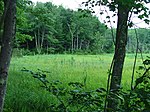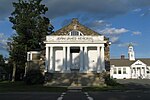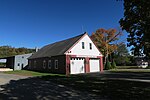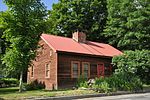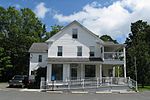Mountain Rest
Buildings and structures in Hampshire County, MassachusettsHouses on the National Register of Historic Places in MassachusettsNational Register of Historic Places in Hampshire County, MassachusettsResidential buildings completed in 1902

Mountain Rest is a historic religious summer retreat on Wildwood Lane, off Spruce Corner Road in Goshen, Massachusetts. Built in the first decade of the 20th century, it served as a retreat for Christian missionaries to foreign countries during periods of furlough in the United States, and as a training facility for future missionaries. The camp was listed on the National Register of Historic Places in 1983. The camp closed in 1970, and in 1987 the complex was converted to condominiums.
Excerpt from the Wikipedia article Mountain Rest (License: CC BY-SA 3.0, Authors, Images).Mountain Rest
Wildwood Lane,
Geographical coordinates (GPS) Address Nearby Places Show on map
Geographical coordinates (GPS)
| Latitude | Longitude |
|---|---|
| N 42.46 ° | E -72.839722222222 ° |
Address
Wildwood Lane 2
01032
Massachusetts, United States
Open on Google Maps

